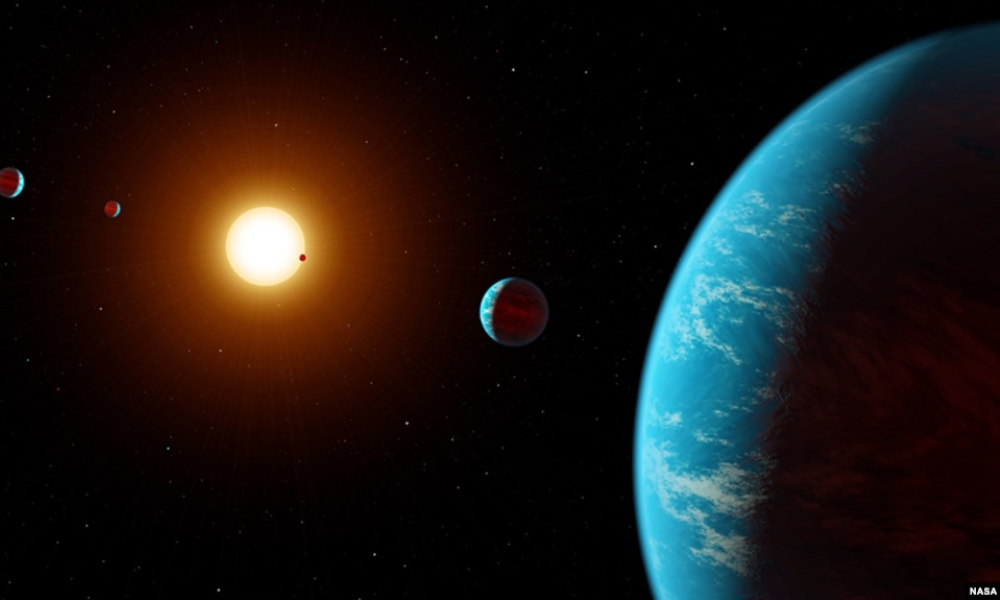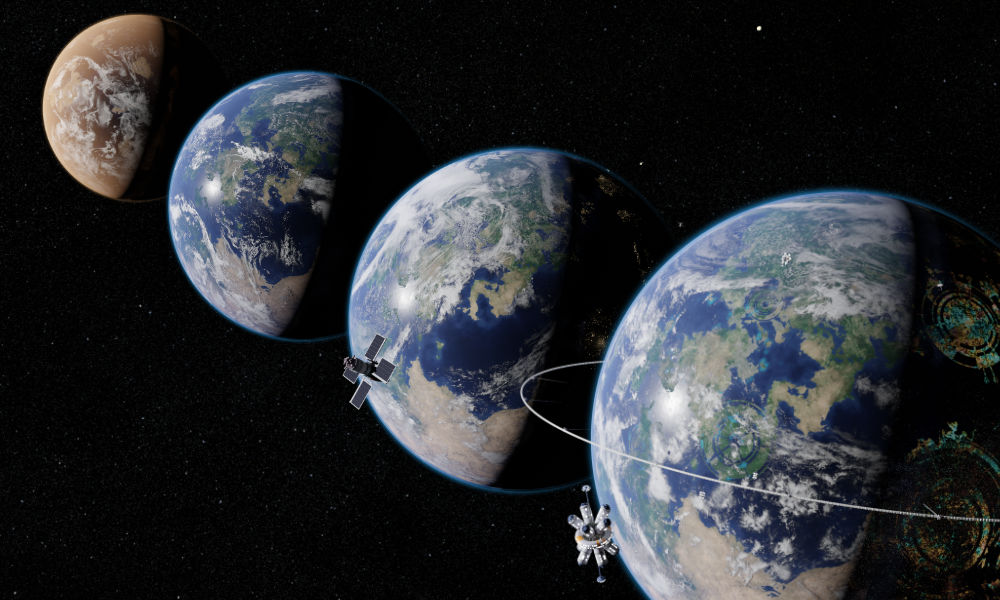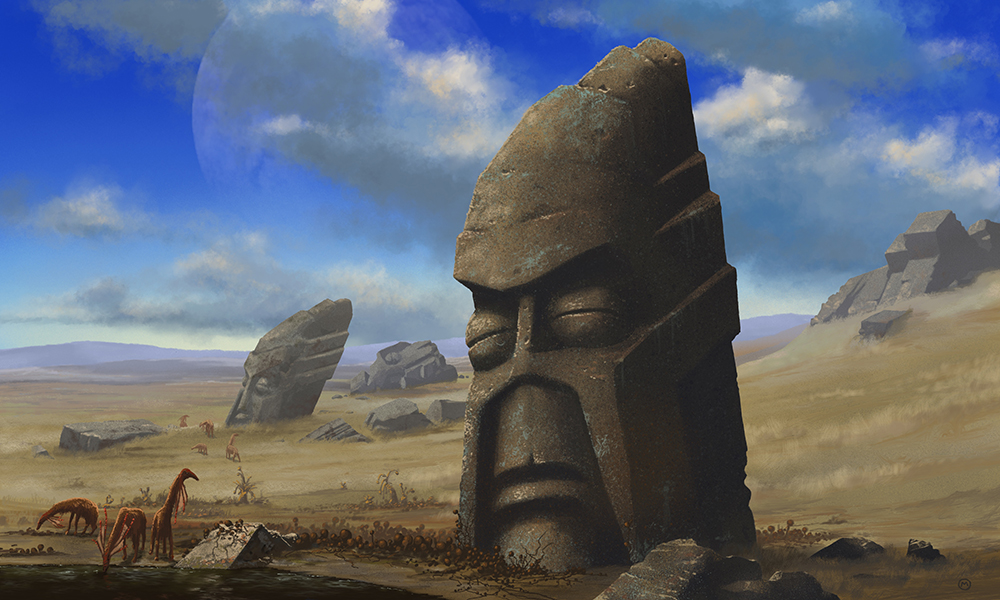Are aliens real? Do aliens exist? A NASA grant enables Rochester astrophysicist Adam Frank to search for traces of advanced technology on exoplanets.
In 1995 a pair of scientists discovered a planet outside our solar system orbiting a solar-type star. Since that finding—which won the scientists a portion of the 2019 Nobel Prize in Physics—researchers have discovered more than 4,000 exoplanets, including some Earth-like planets that may have the potential to harbor life. These planets may be the key to answering the questions, are aliens real, and do aliens exist?
In order to detect if planets are harboring life, however, scientists must first determine what features indicate that life is (or once was) present.
Over the last decade, astronomers have expended great effort trying to find what traces of simple forms of life—known as “biosignatures”—might exist elsewhere in the universe. But what if an alien planet hosted intelligent life that built a technological civilization? Could there be “technosignatures” that civilization on another world would create that could be seen from Earth? And, could these technosignatures be even easier to detect than biosignatures?
How can technosignatures help answer the questions: Are aliens real? Do aliens exist?
Adam Frank, a professor of physics and astronomy at the University of Rochester, has received a grant from NASA that will enable him to begin to answer these questions. The grant will fund his study of technosignatures—detectable signs of past or present technology used on other planets. This is the first NASA non-radio technosignature grant ever awarded and represents an exciting new direction for the search for extraterrestrial intelligence (SETI). The grant will allow Frank, along with collaborators Jacob-Haqq Misra from the international nonprofit organization Blue Marble Space, Manasvi Lingam from the Florida Institute of Technology, Avi Loeb from Harvard University, and Jason Wright from Pennsylvania State University, to produce the first entries in an online technosignature library.
“SETI has always faced the challenge of figuring out where to look,” Frank says. “Which stars do you point your telescope at and look for signals? Now we know where to look. We have thousands of exoplanets including planets in the habitable zone where life can form. The game has changed.”
The nature of the search for alien life has changed as well. A civilization, by nature, will need to find a way to produce energy, and, Frank says, “there are only so many forms of energy in the universe. Aliens are not magic.”
Although life may take many forms, it will always be based on the same physical and chemical principles that underlie the universe. The same connection holds for building a civilization; any technology that an alien civilization uses is going to be based on physics and chemistry. That means researchers can use what they’ve learned in Earth-bound labs to guide their thinking about what may have happened elsewhere in the universe and to answer the question, do aliens exist.
“My hope is that, using this grant, we will quantify new ways to probe signs of alien technological civilizations that are similar or much more advanced to our own,” says Loeb, the Frank B. Baird, Jr., Professor of Science at Harvard.
The researchers will begin the project by looking at two possible technosignatures that might indicate technological activity on another planet:
- Solar panels. Stars are one of the most powerful energy generators in the universe. On Earth, we harness energy from our star, the sun, so “using solar energy would be a pretty natural thing for other civilizations to do,” Frank says. If a civilization uses a lot of solar panels, the light that is reflected from the planet would have a certain spectral signature—a measurement of the wavelengths of light that are reflected or absorbed—indicating the presence of those solar collectors. The researchers will determine the spectral signatures of large-scale planetary solar energy collection.
- Pollutants. “We have come a long way toward understanding how we might detect life on other worlds from the gases present in those worlds’ atmospheres,” says Wright, a professor of astronomy and astrophysics at Penn State. On Earth, we are able to detect chemicals in our atmosphere by the light the chemicals absorb. Some examples of these chemicals include methane, oxygen, and artificial gases such as the chloroflourocarbons (CFCs) we once used as refrigerants. Biosignature studies focus on chemicals like methane, which simple life will produce. Frank and his colleagues will catalogue the signatures of chemicals, such as CFCs, that indicate the presence of an industrial civilization.
The information will be gathered in an online library of technosignatures that astrophysicists will be able to use as a comparative tool when gathering data to answer the questions, do aliens exist and are aliens real.
“Our job is to say, ‘this wavelength band is where you might see certain types of pollutants, this wavelength band is where you would see sunlight reflected off solar panels,” Frank says. “This way astronomers observing a distant exoplanet will know where and what to look for if they’re searching for technosignatures.”
The work is a continuation of Frank’s previous research on theoretical astrophysics and SETI, including developing a mathematical model to illustrate how a technologically advanced population and its planet might develop or collapse together; classifying hypothetical “exo-civilizations” based on their ability to harness energy; and a thought experiment asking if a previous, long-extinct technological civilization on Earth would still be detectable today.






